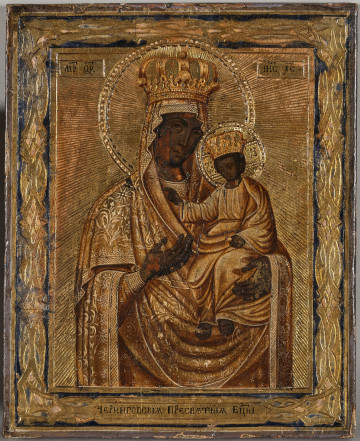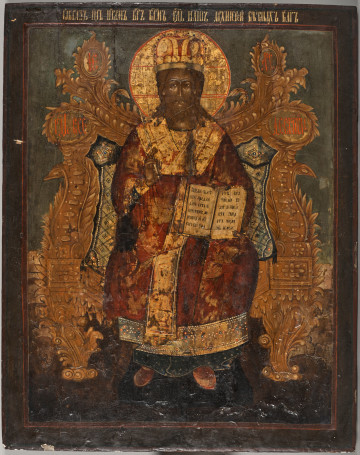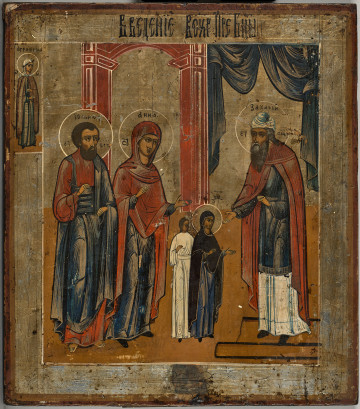
The Mother of God of Hodigitria
19th (?) century
Castle Museum in Łańcut
Part of the collection: Ikony
Deesis. In Greek, Deesis means supplication, plea, as well as intercessory prayer. Since the time of early Christianity, the term formed on the basis of liturgical texts, such as the Eucharistic thanks-giving prayer and supplication prayers, in which the Church resorts to the intercession of the Mother of God, John the Baptist, angels, apostles, martyrs, and saints. Their figures, on a par with the central figure of Christ, have already entered images of Deesis in the 6th-7th c. Over time, various visual variants of this depiction developed. The ways to interpret it are also multifaceted. After the period of iconoclasm in the 9th-11th c., depictions of Deesis began to be placed on the beam of the architrave within the templon, which constitutes the border between the spheres of the sacred (sanctuary) and profane (nave for the faithful). With the formation of the multi-panel altar partition in Rus, Deesis became one of the tiers of the iconostasis. In the basic variant of the portrayal, there are three figures: Christ-Pantocrator the Almighty, as well as the greatest intercessors for humanity turning to him in supplication prayer: the Mother of God and St. John the Baptist, who, at the same time, represent all of humankind. Their presence also signifies the mystery of the Saviour's Incarnation, attained with the aid of the Mother of God and attested to by John, who was present when the Holy Spirit descented on the Son of God during the baptism in Jordan. On a par with the basic variant, the Great Deesis developed; a centrally placed trimorphon (with three figures) supplemented by Archangels, who embody the entirety of the unseen angelic world, forms a pentamorphon (with five figures); additionally, there are further figures of saints personifying the earthly Church. The composition of figures in such icons is always hierarchical. Depictions of Deesis also became popular in individual private worship, which can be seen on the example of the presented icon.
Dimensions
height: 44.5 cm, width: 39 cm
Object type
Icons
Technique
gilding, tempera
Material
silver, tempera, wood
Origin / acquisition method
decyzja administracyjna
Creation time / dating
Creation / finding place
Owner
Castle Museum in Łańcut
Identification number
Location / status

19th (?) century
Castle Museum in Łańcut

1800 — 1850
Castle Museum in Łańcut

1800 — 1899
Castle Museum in Łańcut
DISCOVER this TOPIC
Museum of King Jan III's Palace at Wilanów
DISCOVER this PATH
Educational path